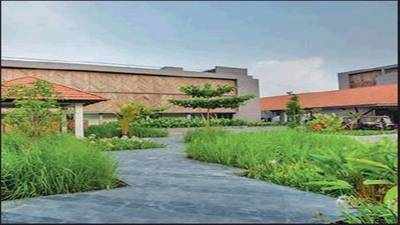Kerala: First five-star resort in cooperative sector opening today in Wayanad
Text Size
- Small
- Medium
- Large

The soft launch of Rs 100-crore Saptha Resort and Spa, spread across four acres and situated close to Wayanad Wildlife Sanctuary, will mark the foray of Kerala Land Reforms and Development Cooperative Society (Ladder), into the luxury hospitality sector.
It has 63 rooms, including four suit rooms, apart from facilities like a convention hall that can accommodate 500 guests, specialty restaurants, infinity pool, mini movie theatre and a gaming area. The three-floor resort also has a business centre and two board rooms.
"We forayed into the sector as tourism is the only dependable industry that Kerala can look forward to in the future. It offers the potential of marketing our nature, climate and destinations. We also want to give a message that nothing is impossible for the cooperative sector," said C N Vijayakrishnan, its founder chairman.

Resort is 92km from Ooty
He said the state’s cooperative sector had been able to make successful forays into sectors ranging from education to health and agriculture and its entry would speed up the tourism growth rate and tourism infrastructure creation.
Vijayakrishnan, who has steered many pioneering initiatives in the cooperative sector including the Rs 350 crore MVR Cancer Centre and Research Institute, pointed out that Wayanad has a spectacular cricket stadium in Krishnagiri but the state has not been able to exploit it fully due to shortage of hotel rooms. The resort also has a locational advantage of being close to the trijuction of three states, with just 92km from Ooty and 115km from Mysore, he added.
Top Category Deals

Unrivalled India Coverage
Subscribe to 1 year TOI+ membership for ₹799 599 only.










